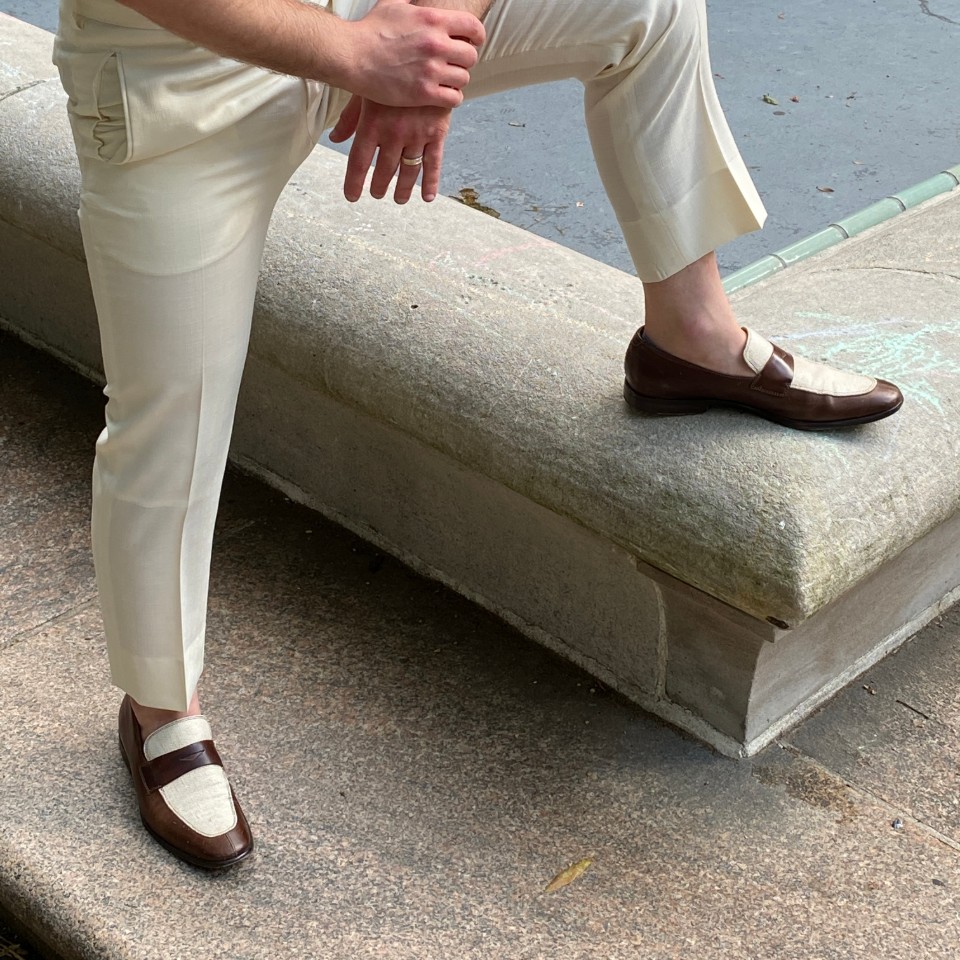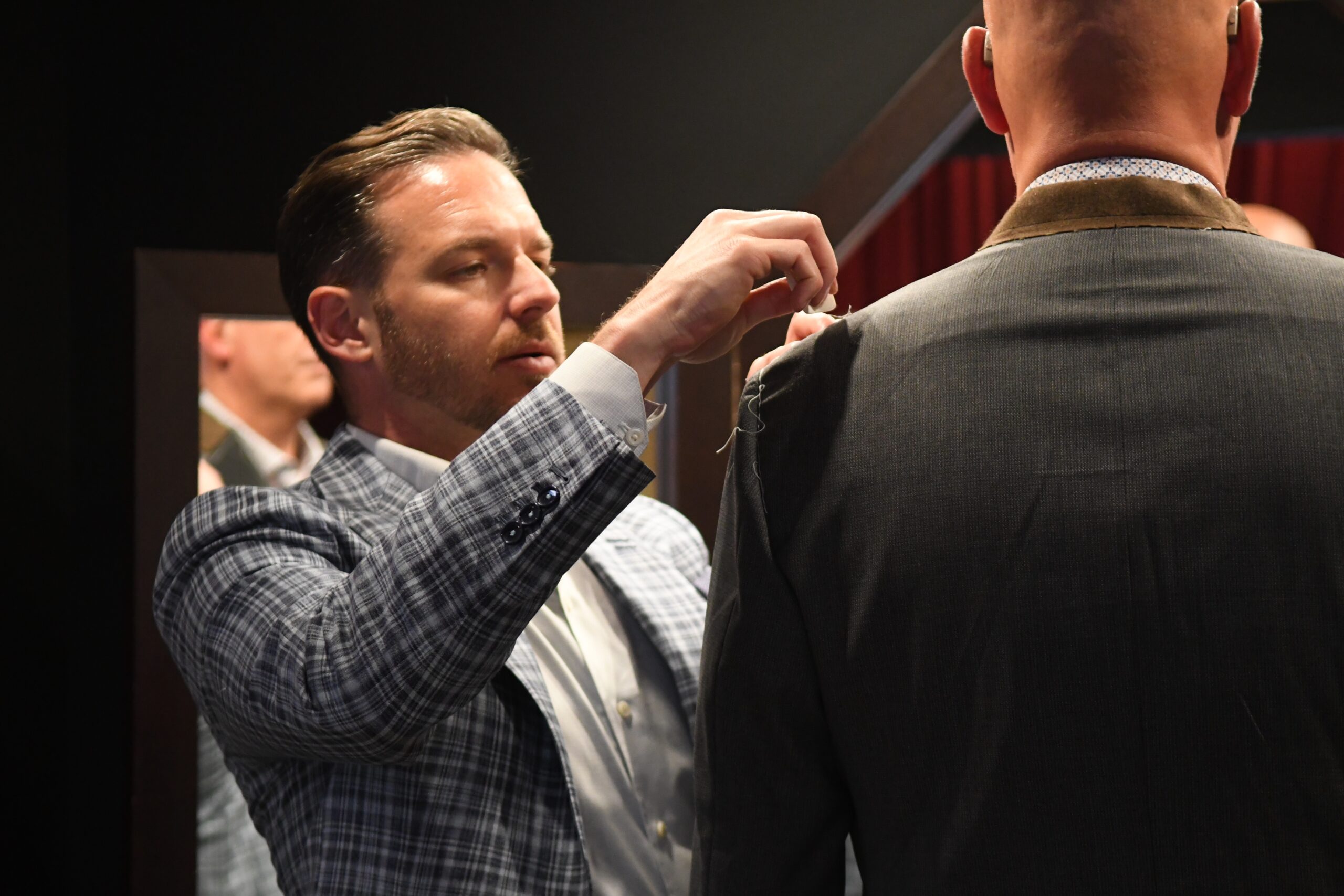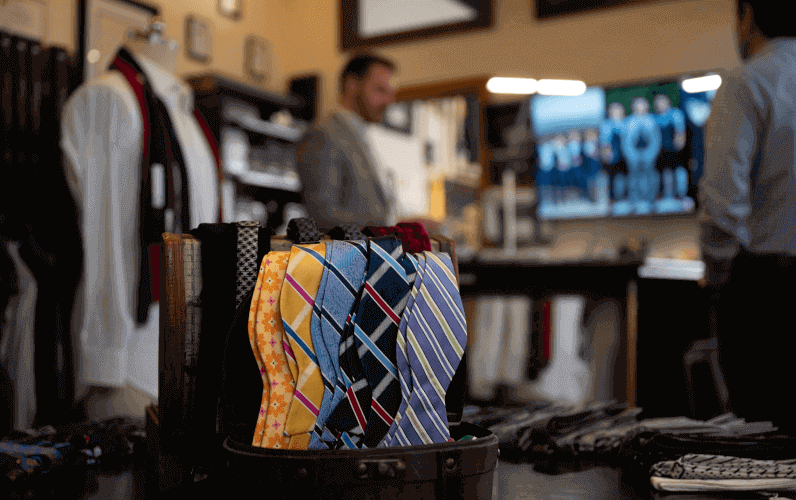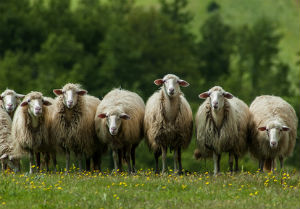
Unlike piece-dyed fabric, where an entire length of ecru-colored (light yellow) woven cloth is dyed to order, yarn-dyed fabric is woven with yarns that have already been dyed. The result is a cloth of higher quality that will have better color fastness and consistency. There is, however, another level of quality for the fabric connoisseur: top-dyed yarns.
Top-dyed yarns are actually made from fiber that is dyed before being spun into yarn. This is a very expensive process, but essential when creating rich colors within the yarn and the woven cloth. Like an oil painting, a top-dyed yarn contains many “live” colors within its structure, rather than a single monochromatic base color. Fabric that is woven with top-dyed yarns is full of life and energy because the yarns contain multiple colors within them. A royal blue top-dyed fabric, for example, can have a small percentage of “live” scarlet colored fibers within the structure of the yarn.
How Is Sheep’s Wool Turned Into Suit Fabric?
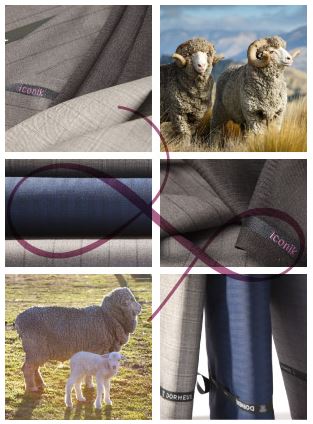
But let’s take a few steps back before we get to the top-dying process.
Cleaning
After the dirt and suint (natural grease) have been removed from the wool fibers, the scoured product is dried in a dryer consisting of a series of drums, much like a clothes dryer. This process is critical. It ensures that the wool is dry enough to properly remove vegetable matter during the next step, carding, while at the same time retaining sufficient moisture to minimize static electricity build-up in subsequent processes.
Carding
Carding uses rollers of varying sizes rotating and counter-rotating to “tease out” the wool fibers using teeth or pins on the carding rollers. Carding eventually creates a continuous sliver of parallel fibers. Some of the carding rollers also help to remove heavy clumps of vegetable matter by using beating blades on the wool sliver.
Gilling And Drafting
The carded sliver then passes through the process of ‘gilling’ and ‘drafting,’ whereby the wool fibers are further straightened or separated into parallel strands through a succession of machines called gills, then drafted when rollers operating at different speeds transform the carded sliver into a much thinner and very uniform product.
Combing
The wool is now ready for combing, which is the process of separating the long and very short fibers within the sliver, as well as removing all residual vegetable matter and aligning the wool fibers in as perfect a condition as possible.
The Finished Product? Not Quite
The final product is called wooltop. The quality of combing the wooltop is critical to ensure that the best and most uniform product is presented to the spinner. The spinner will be looking for the best quality wooltop in terms of sliver weight, cleanliness, and minimal neps and pinpoints (small balls of entangled fibers). Only top quality wooltop can produce the very best quality yarn.
Finally, The Perfect Yarn For Luxury Suit Fabrics
When fibers are dyed before the spinning process, the wooltop can be built up with a myriad combination of colors and the result is a brilliant color that cannot be copied or recreated by any other process.
The entire collection of Dormeuil’s exclusive top dyed luxury fabric is available at Henry A. Davidsen Master Tailors & Image Consultants in Philadelphia.
